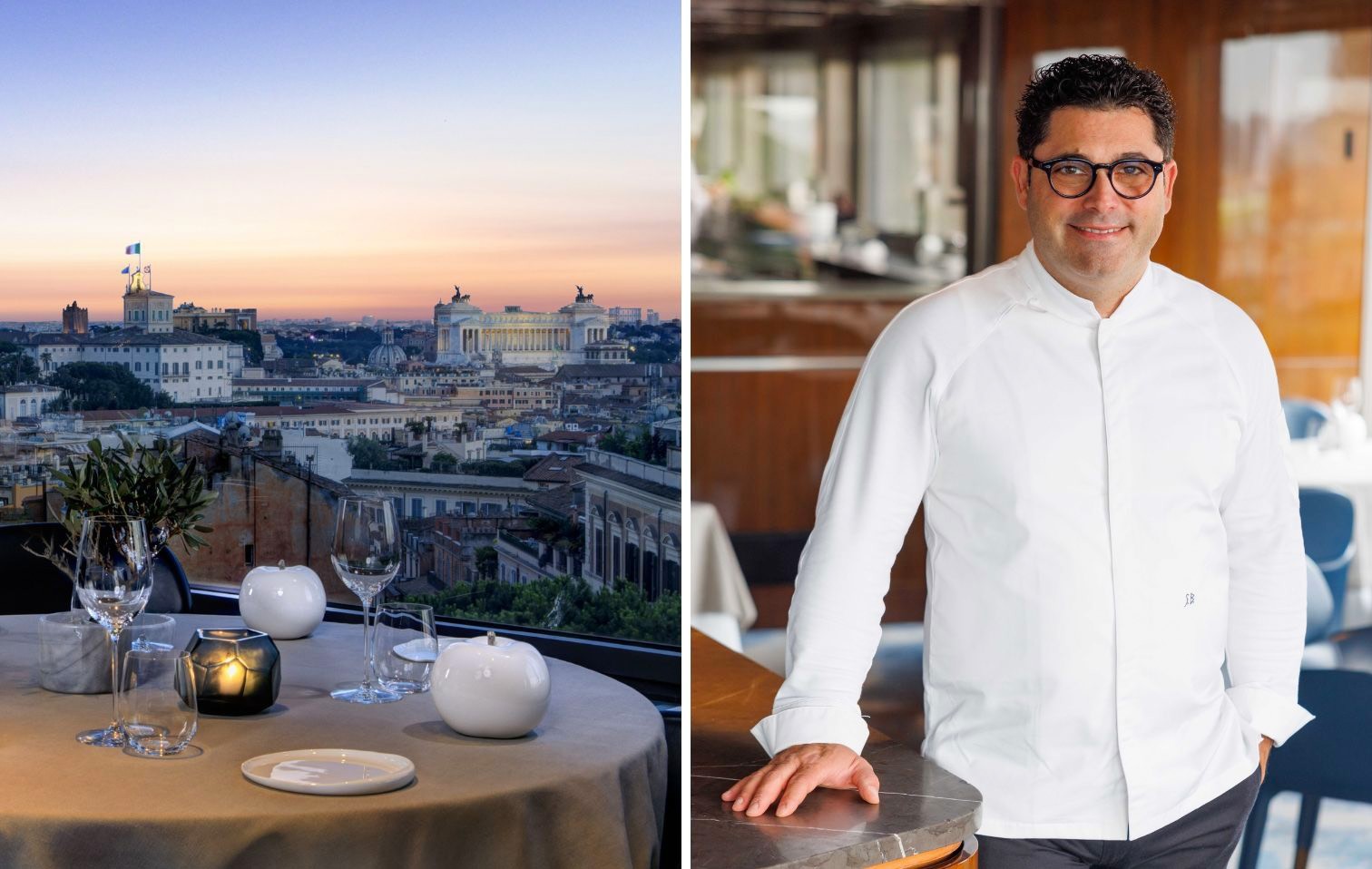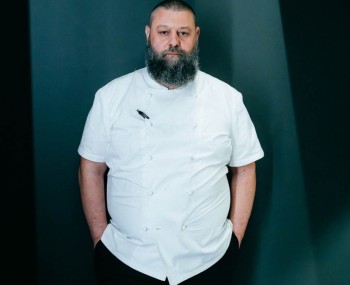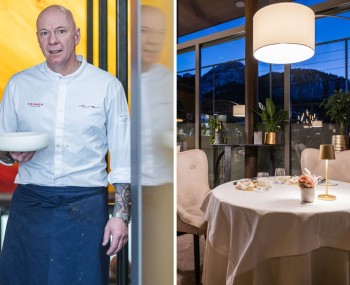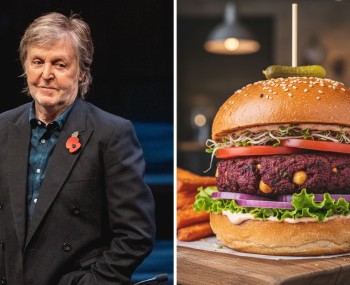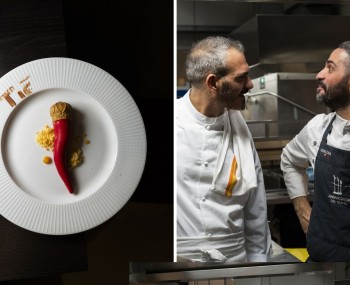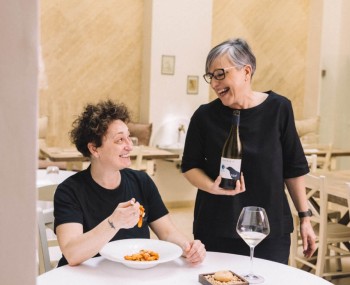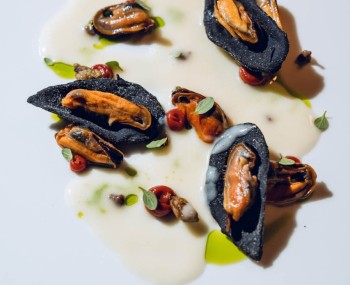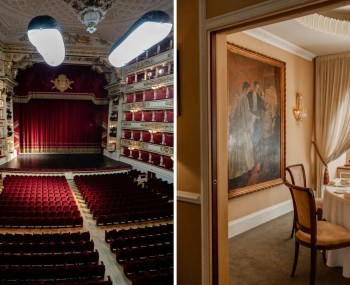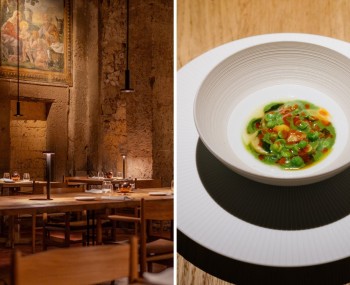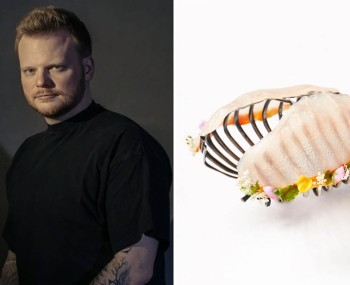The Italian capital outpost of Dorchester Collection scores a new gourmet hit: with Salvatore Bianco, the Terrazza menu is enriched with artistic references, prodding the senses through two Salvador Dali - inspired itineraries. All around, a long-established hotel flaunts the charm of the years against the blackout of memory.
“Start drawing and painting like the old masters, then do as you wish -only then will you always be respected.”
Curious that it was Salvador Dali, a rebellious genius of a creative temperament decidedly far from the classical canons, who said this. Instead, the “marquis-outsider” up to the tip of his mustache had studied Renaissance works to death. A golden rule, that of elevating the ancient on the pedestal of the present, which invests art to the fullest extent, from immortal reprints of bestsellers to auteur lyricism impervious to the centuries, passing through the gilded subset ofhaute cuisine. Distant branches? No, or rather, not always: galeotto was the surrealist crossover. As it happens, in fact, in the Urbe erected on layers and layers of millenary vestiges , a chef has just sketched his menu tracing the irreverent models of the 1920s avant-garde.
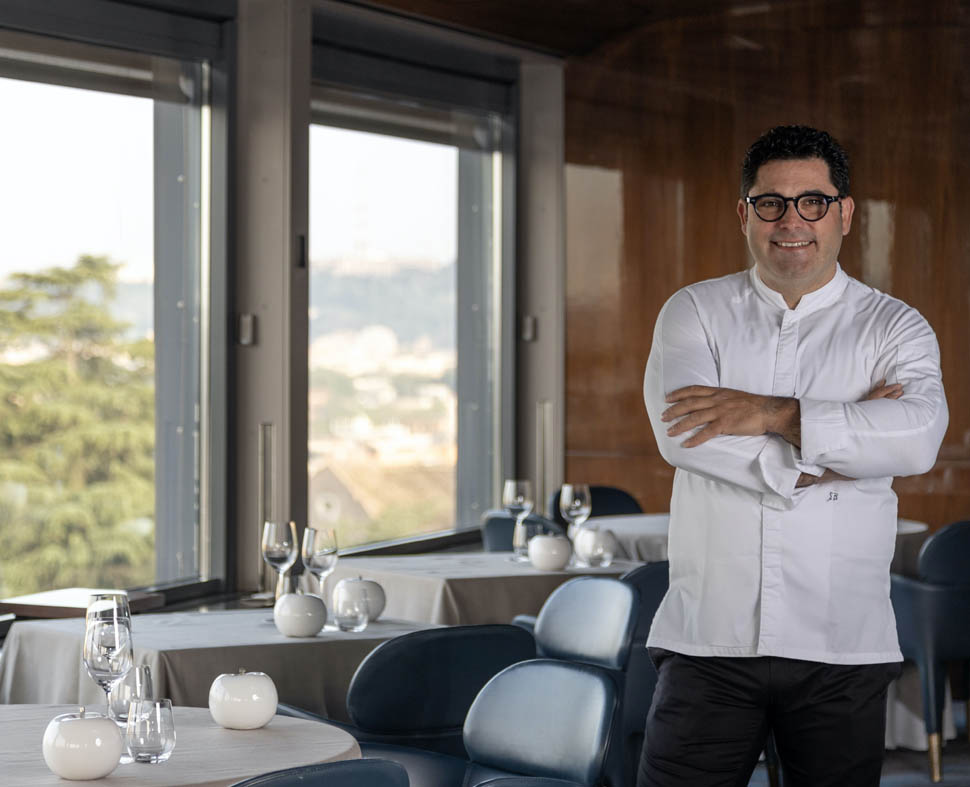
Attempting the feat (with sketches "from life" on a table facing Rome and dishes inspired precisely by Dali), Salvatore Bianco, a Campania veteran ready to oil the gears of a newly "restored" gourmet mechanism at the Terrazza of Hotel Eden. Just deviate from the leafy carpet of Via Veneto, follow the glamorous trail of decorations highlighting the 5-star hotel on Via Ludovisi, and head straight up to the sixth floor to encounter another city-not locked in a room of heirlooms, but vibrantly open to cultural brainstorming.
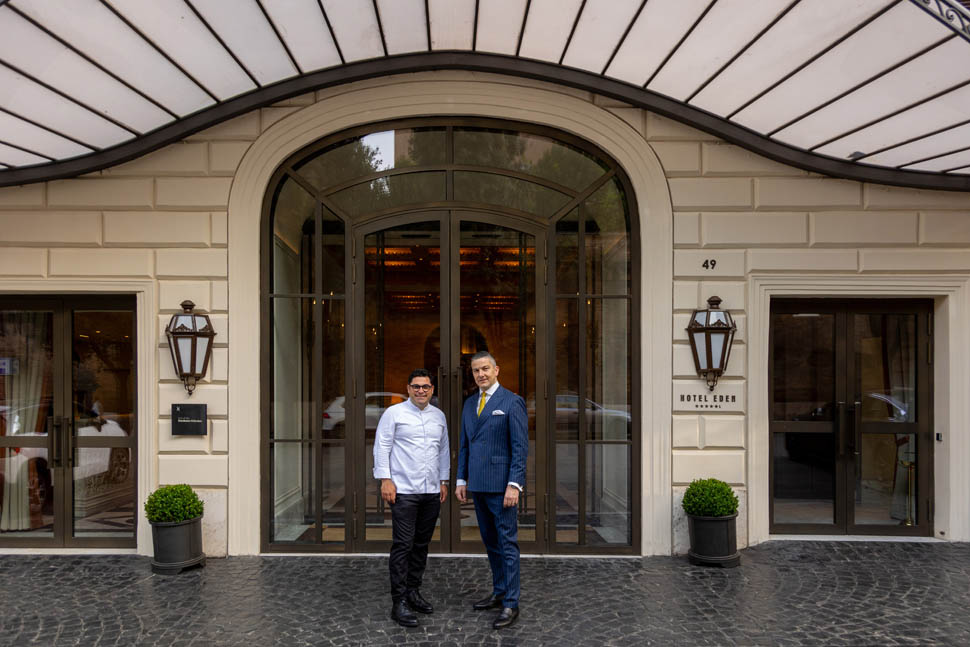
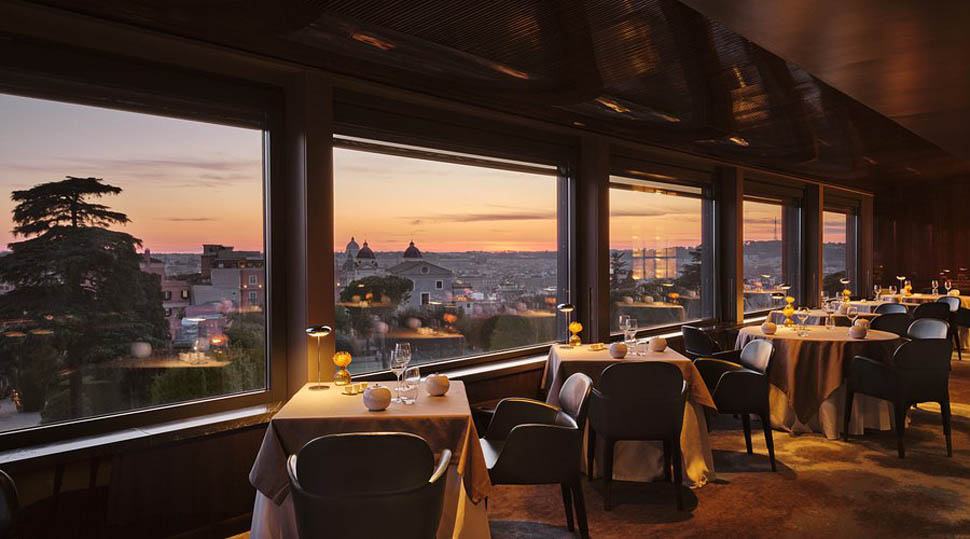
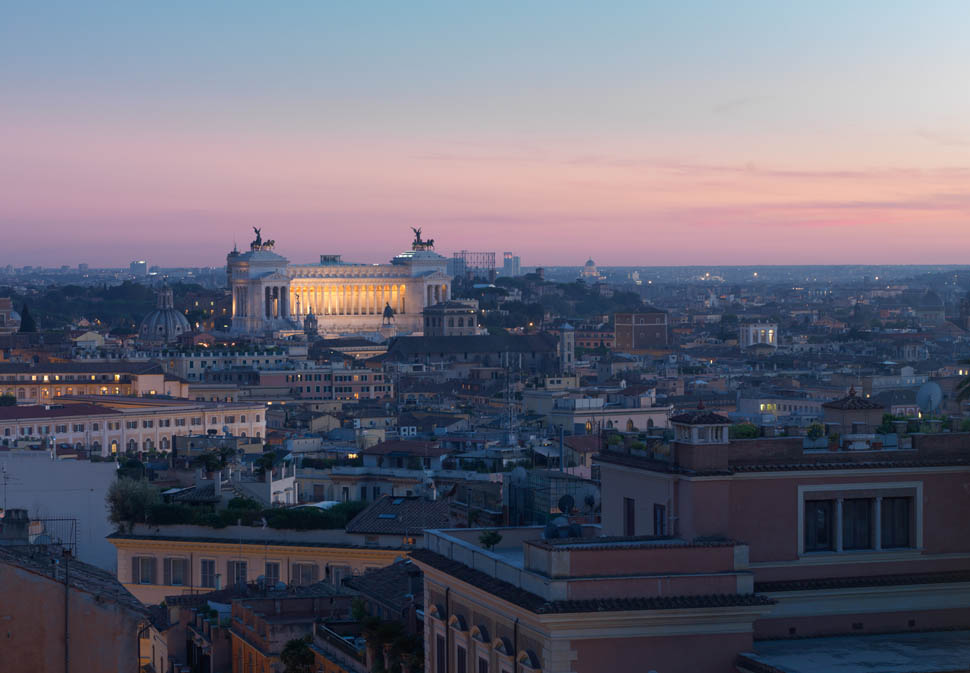
Here Bianco, back from a decade (and a long-lived Michelin Star) at the helm of Naples' Comandante del Romeo, starts with a playlist of established ingredients to compose a harmonious meal, reviving the classics with current traces. Get ready, then, to taste a “truffle pasta without truffles,” vegetables with the texture of a filet, and tiramisu with coffee vinegar. First, however, go back a few steps and savor the “da Dolce Vita” revival that awaits guests at the entrance.
A 6-story Eden: the hotel, from suites to breakfast
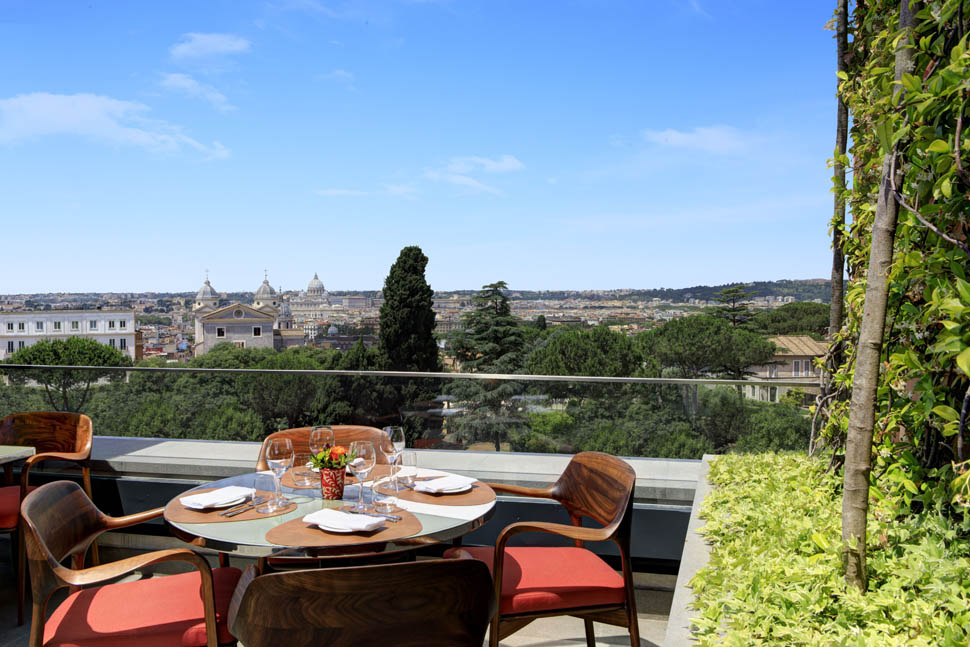
From the threshold, the impression is that of witnessing a meeting of distant epochs that have come to hand in hand in the present. The reception desk sculpted in the image and likeness of the Ara Pacis, the flooring in Pakistani marble (worked, however, by local artisans in Carrara), the coffered ceiling that reflects its golden glow everywhere to create a disconnect between warmth and whiteness: one passes in just a few meters from the solemnity of imperial architecture to the hips-like curves of Art Nouveau.
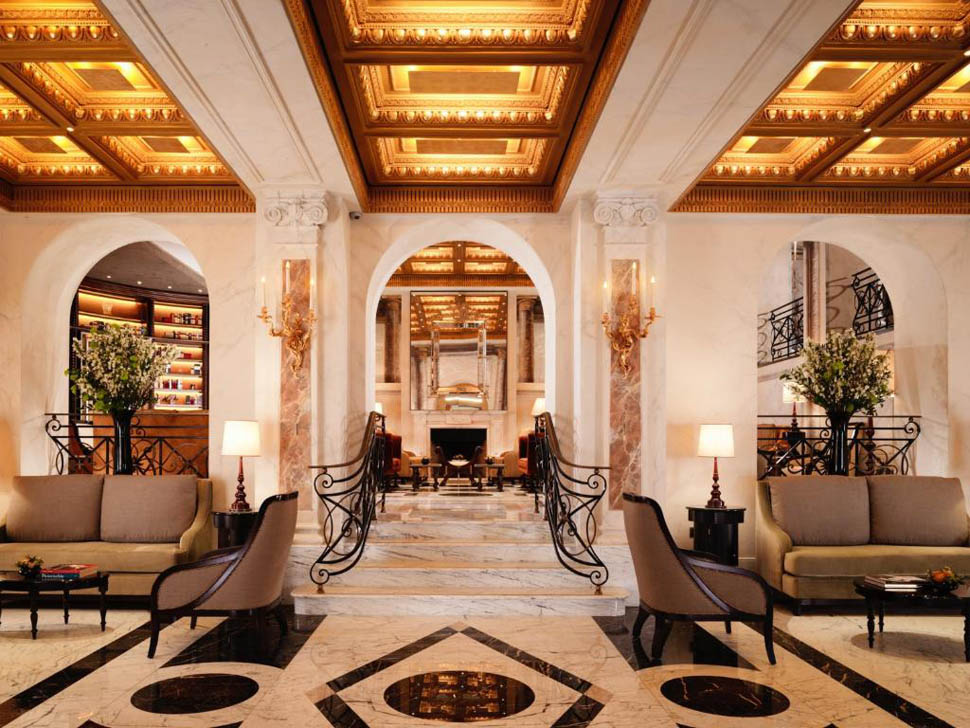
The remaining emerges by brushing up on the sequence of "noble" snapshots of the complex inaugurated in 1887: it makes a certain impression to think that some of the top names of the global elite have entered these rooms-bags in hand and escort in tow. D'Annunzio, for example, special guest in 1899, and then a slew of royals-Umberto of Savoy, Theresa of Bavaria, Charles of Bourbon. Again, director Federico Fellini, whose favorite place for interviews was apparently the terrace jutting out over the gardens of Villa Medici. Except that the creator of Tintin, Hergé, also dedicated a cartoon to the property to fix on paper the memory of his beloved holiday Eden.

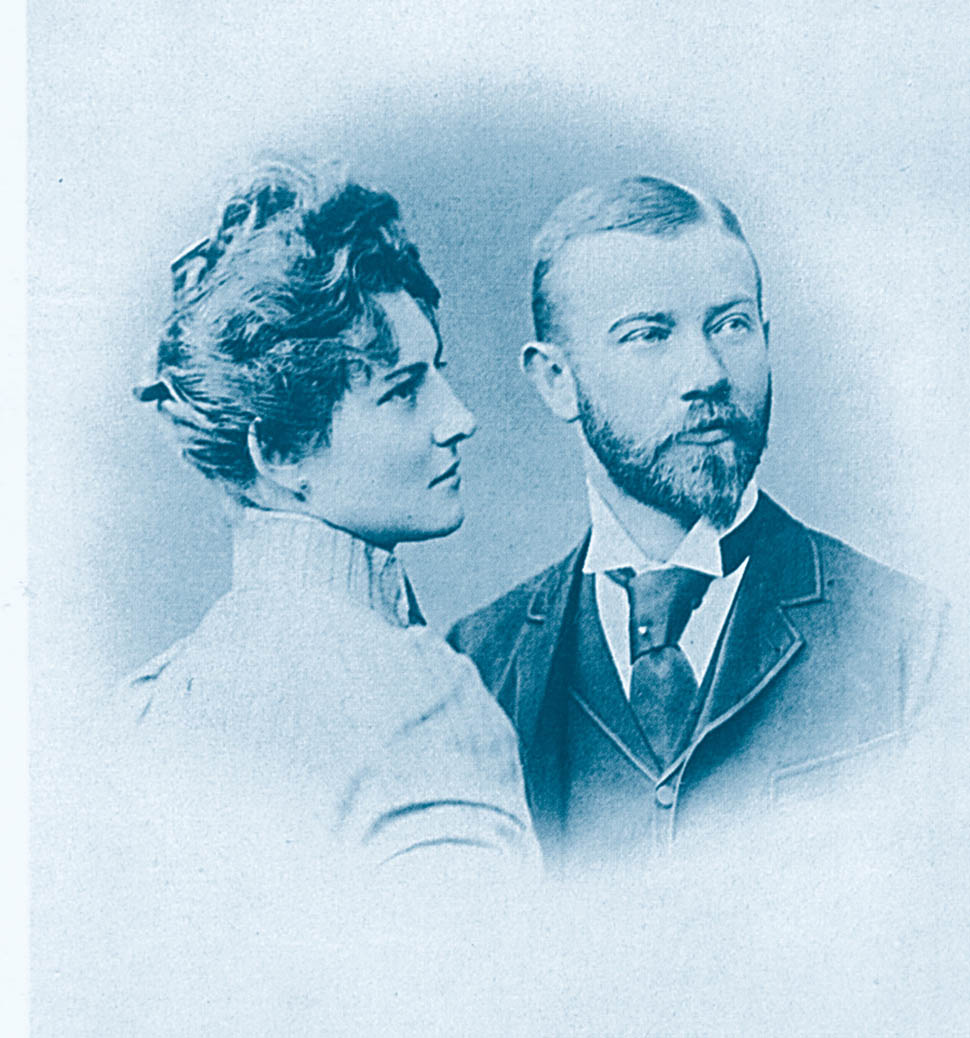
On the other hand, what was the first hotel in the capital to have electric light, running water and new generation elevators, today chooses the path of thoughtful restyling, showing off the charm of the years against the blackout of memory. Downstairs, for example, it is easy to see small groups of bibliophiles gathered in the Libreria above the Lobby, where among sofas and illustrated lampshades the flow of reading is interrupted only to draw occasionally from the adjacent secret bar; the rooms expand on the cinematic theme -see the Dolce Vita Suite itself, with studied shots of Villa Malta, mosaics and design pieces to recreate the set-up of a real set to be inhabited in a handful of days; in return, relaxation becomes a luxury behind closed doors in the Spa, accomplices of alpine herbal rituals alternating with Swiss cellular cosmetics.
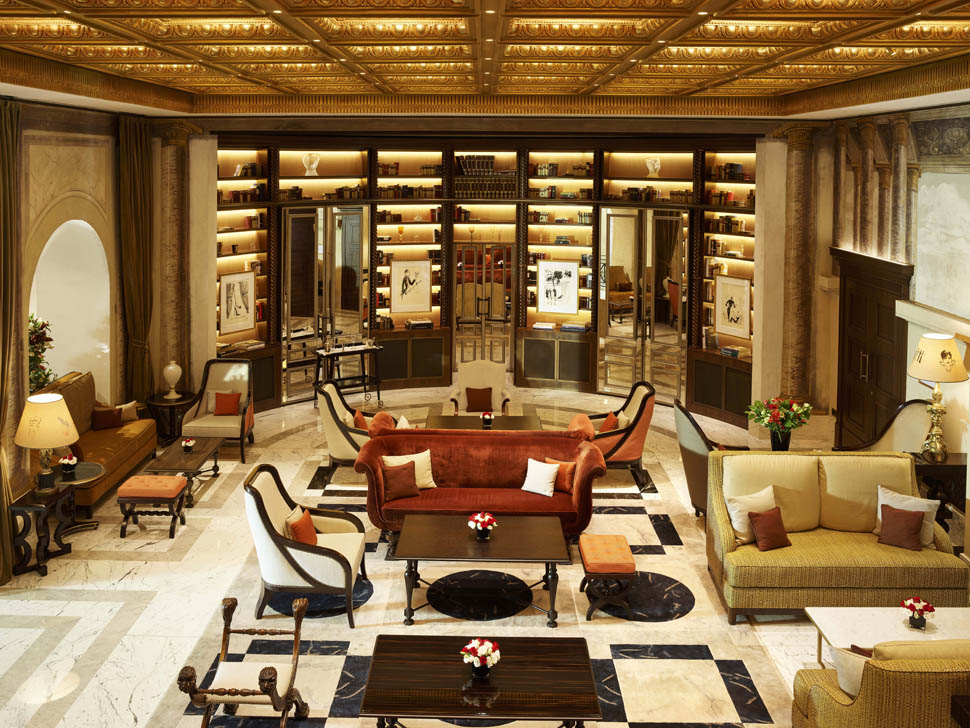
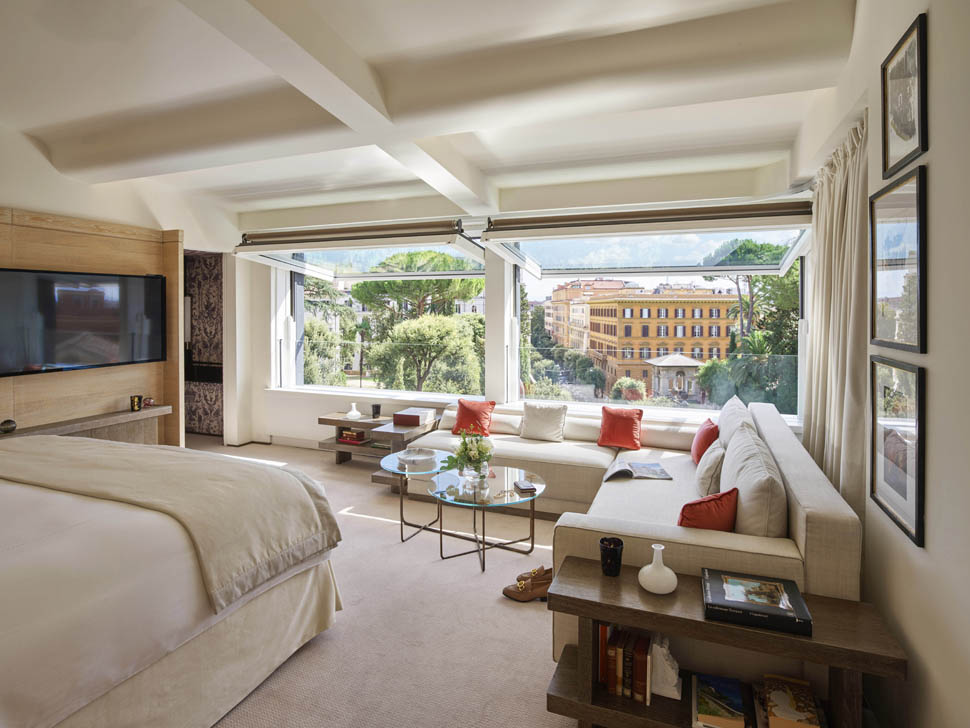
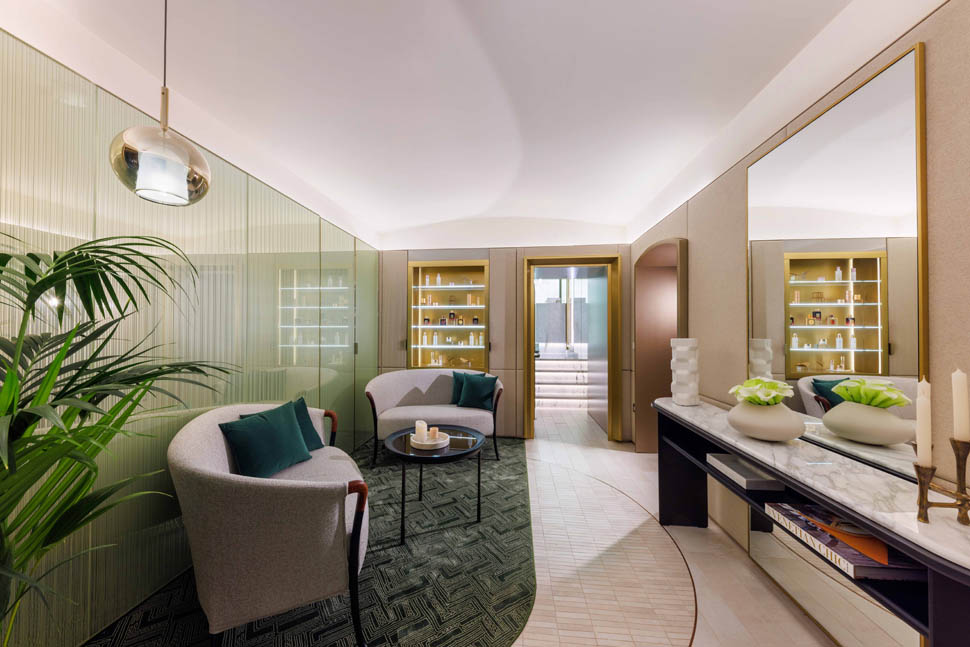
And if already upon waking, the choice lingers between pastry mignon with hot chocolate and truffle omelet with daredevil bubbly, the challenge gradually extends to the middle hours of the day, for a break in the “airy” lounge of Il Giardino restaurant and cocktail bar.
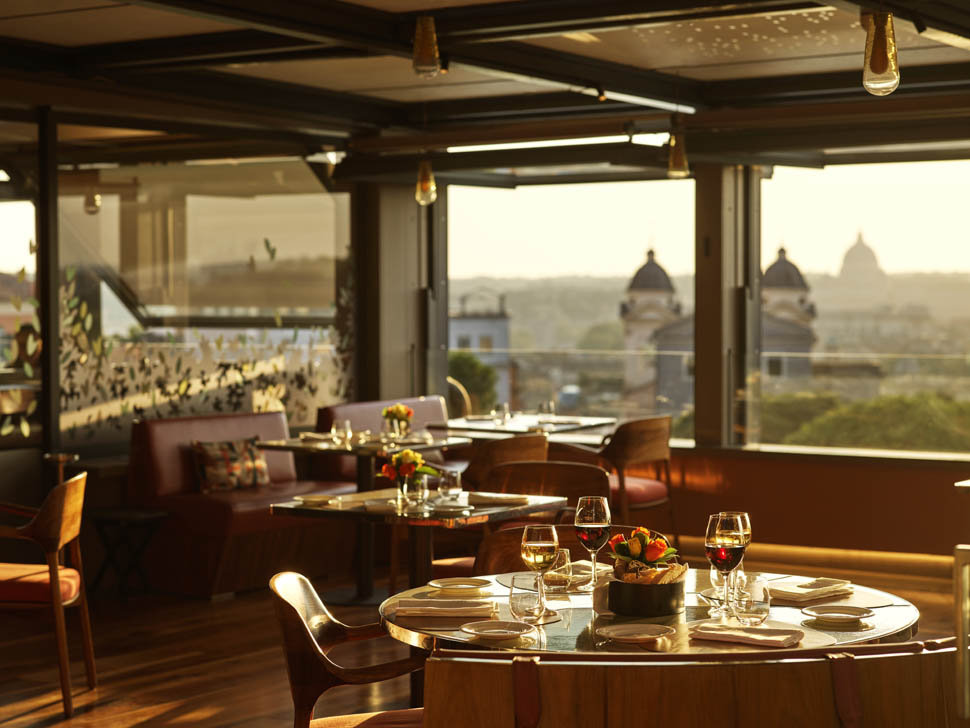
La Terrazza, between certainties and the future: Salvatore Bianco's new menu and a long-standing room
It is dinner, however, the right time to enter tasting mode: as night falls and fires are lit in the back, at La Terrazza the welcome takes a spontaneous turn, dodging the comings and goings of the usual preset schedule. An imprinting, that of the service led by maître Paolo de Cicco and sommelier Stefania Ruggieri, capable of debunking the fanatical image of the “ice room” frozen in rigor, despite the outline being objectively sumptuous. So, beyond the visual stretch that runs through the entire window from the Quirinale to St. Peter's, to capture the attention comes the reception of a group of complementary figures, in a crescendo of gastronomic anecdotes, glasses and teamwork.
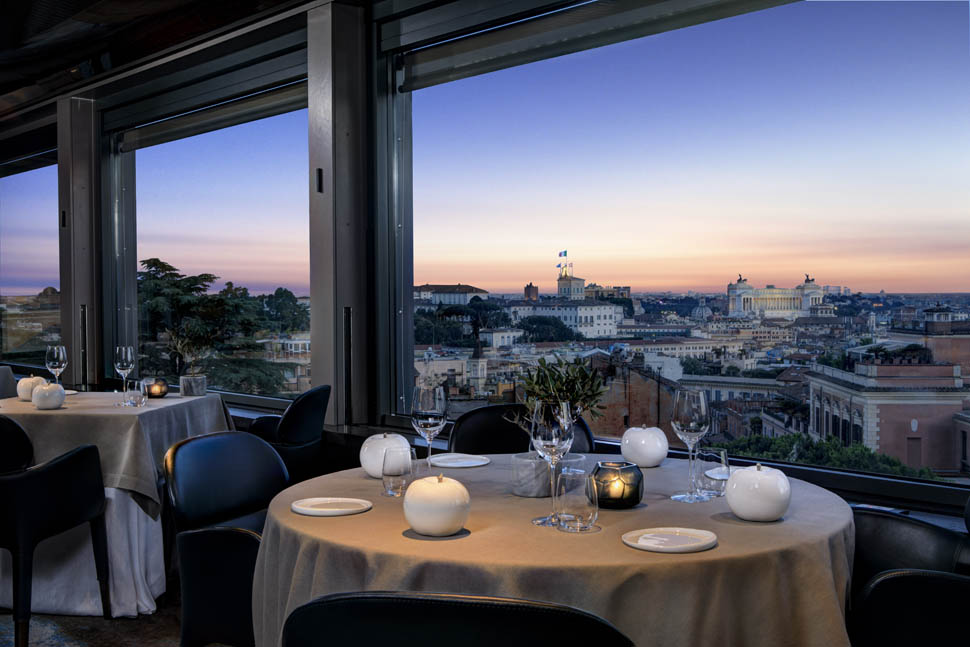
A springboard that the brigade exploits by juggling two fixed itineraries: "La persistenza della memoria" (220 euros), a summation of the chef's signatures to evoke the temporal fluidity of Dali's canvas of the same name (remember the "soft clocks"?), and "La Metamorfosi" (200 euros), inspired by the pictorial representation of the Myth of Narcissus, for a "palingenesis" of Roman cuisine from sweetbreads to fettuccine. There is no shortage of a la carte options, flanked by an intermediate offering of three dishes with dessert included at 180 euros. The result is an acrobatic cuisine in which the animal protein tends to the herbaceous side, with interesting vegetable hits scored by Salvatore Bianco together with Head Chef Raffaele Langella.
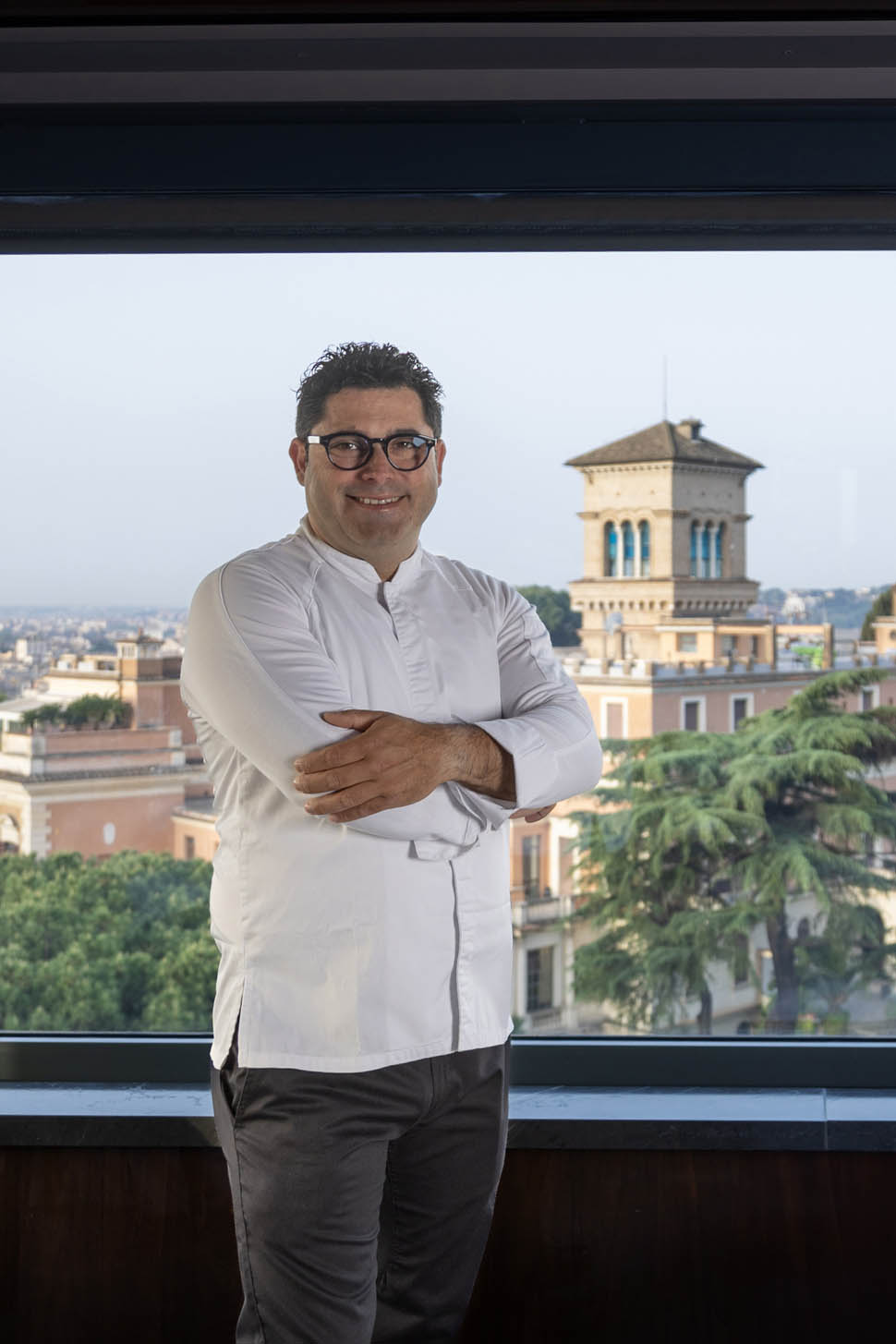
The Dishes
To the eye every finger looks familiar, but in the mouth nothing is as it appears. This is demonstrated by Pane, burro e alici, actually a seeded Pan brioche to be paired with clarified buffalo milk butter and anchovy garum: the ancestral meal-breaker shifted into the present, made intense by sharp accents of fermentation. On the same coastline travels the Maritozzino with seaweed dough, whose filling of shrimp mousse and scallops propels the leavened item from the city to the port. The final embarkation is accomplished with the Neapolitan-style Taralli with almonds and black pepper- and then you're really ready to fully immerse yourself in one of the two tasting menus. It's total the Mazara Shrimp with chicken consommé and its “poor part,” almost a single-ingredient starter that disassembles and reassembles the product in a burst of parsimony.
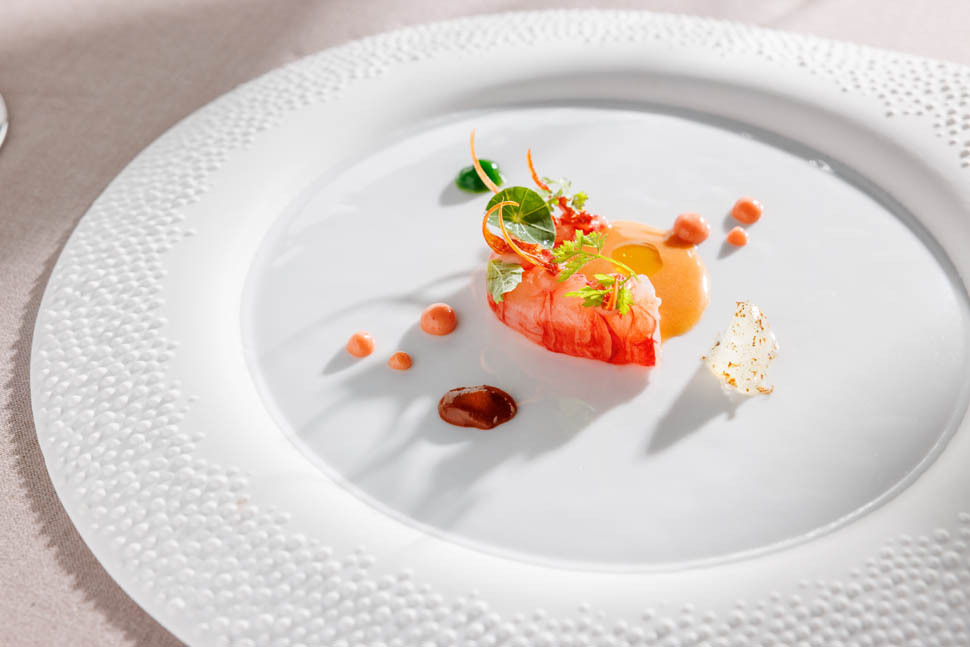
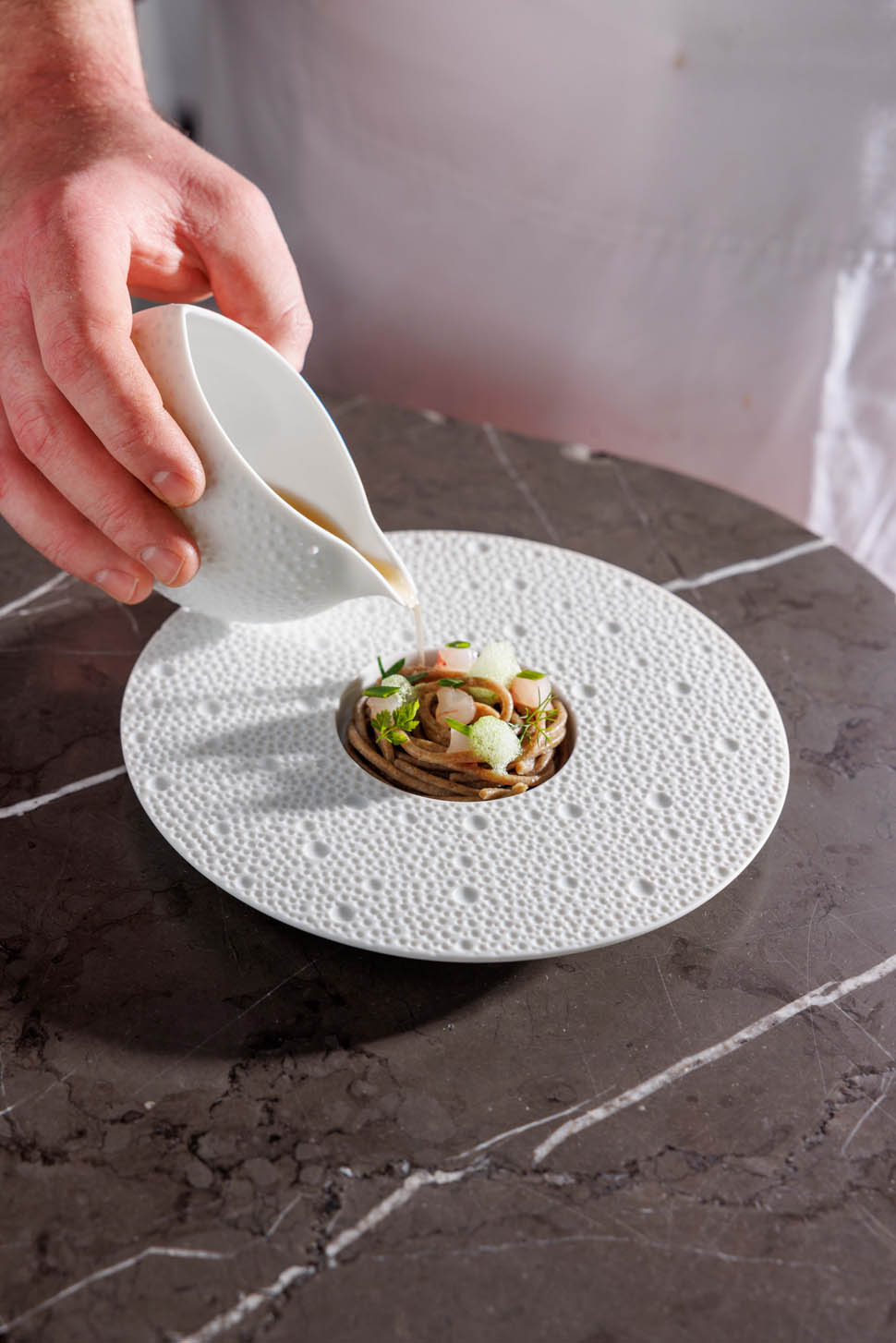
Nothing is to be discarded, not even the little legs (served fried over marinated flesh) and throats (translated into a creamy mayonnaise), while the heads become mousse to enhance the carapace sauce. Next, a gelée with Iranian black lemon powder: the citric veiled by the slightly smoky shadow of the oriental fruit. Last lunge, a raviolo made of 100% scallop, also filled with shrimp mousse and dipped in the fragrant consommé.
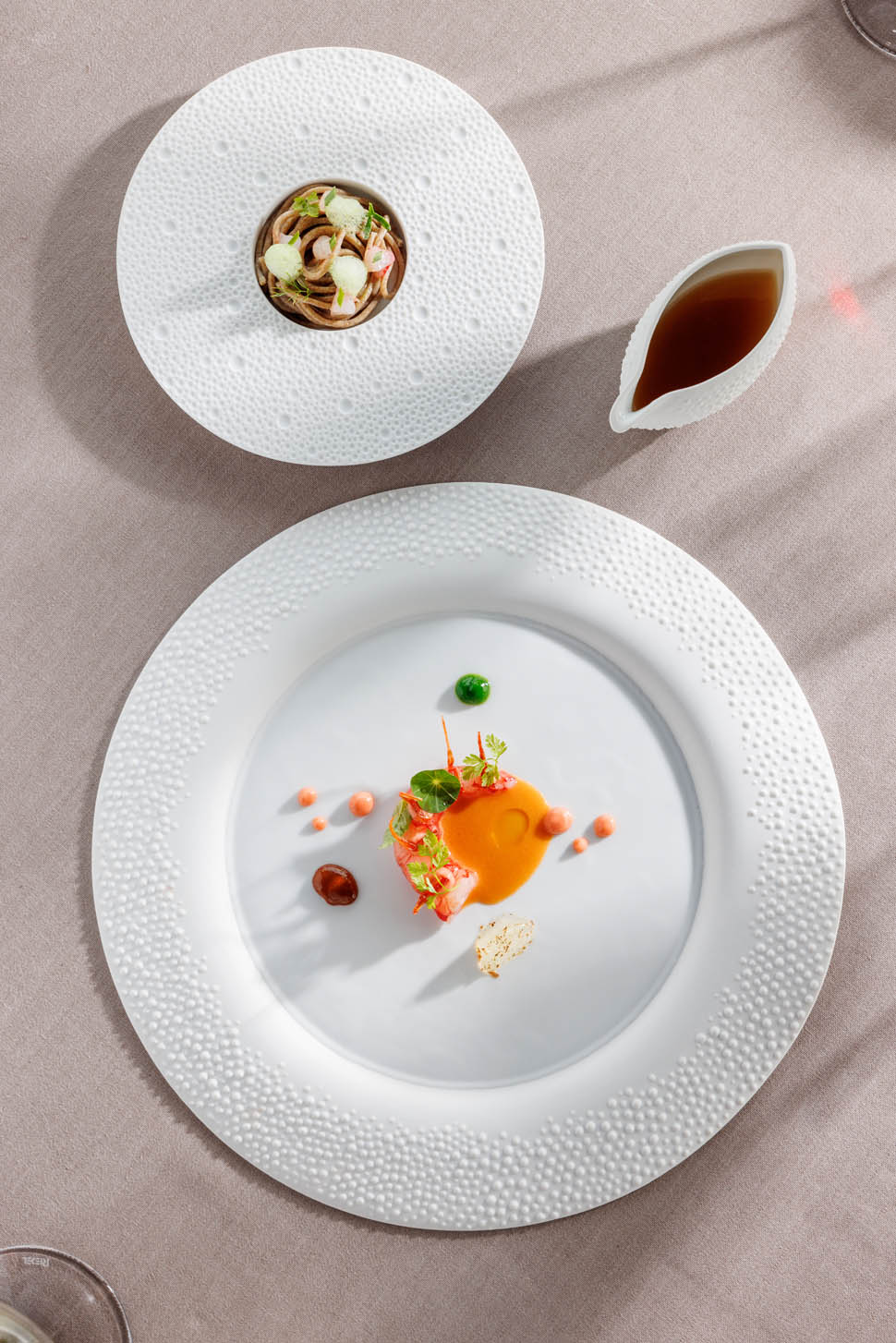
Emulating the fiber of the meat is the Fennel marinated with balsamic vinegar and herbs, first braised and then seared on the barbecue, filet-like. In place of the base is its extract in tune with a dense vegetable reduction; the faint fragrance of anise dancing in tandem with the smokiness. Take a break. Risotto mantecato con brodo di canocchie pauses the hyperstimulation of the initial runs with a calm wave; all of a sudden the chef switches from novelty punch to velvet glove, varying the texture at the finest. Except that the oyster emulsion and seaweed powder topping meet the sting of arugula extract- a wild card destined to break the circle of salinity for a moment.
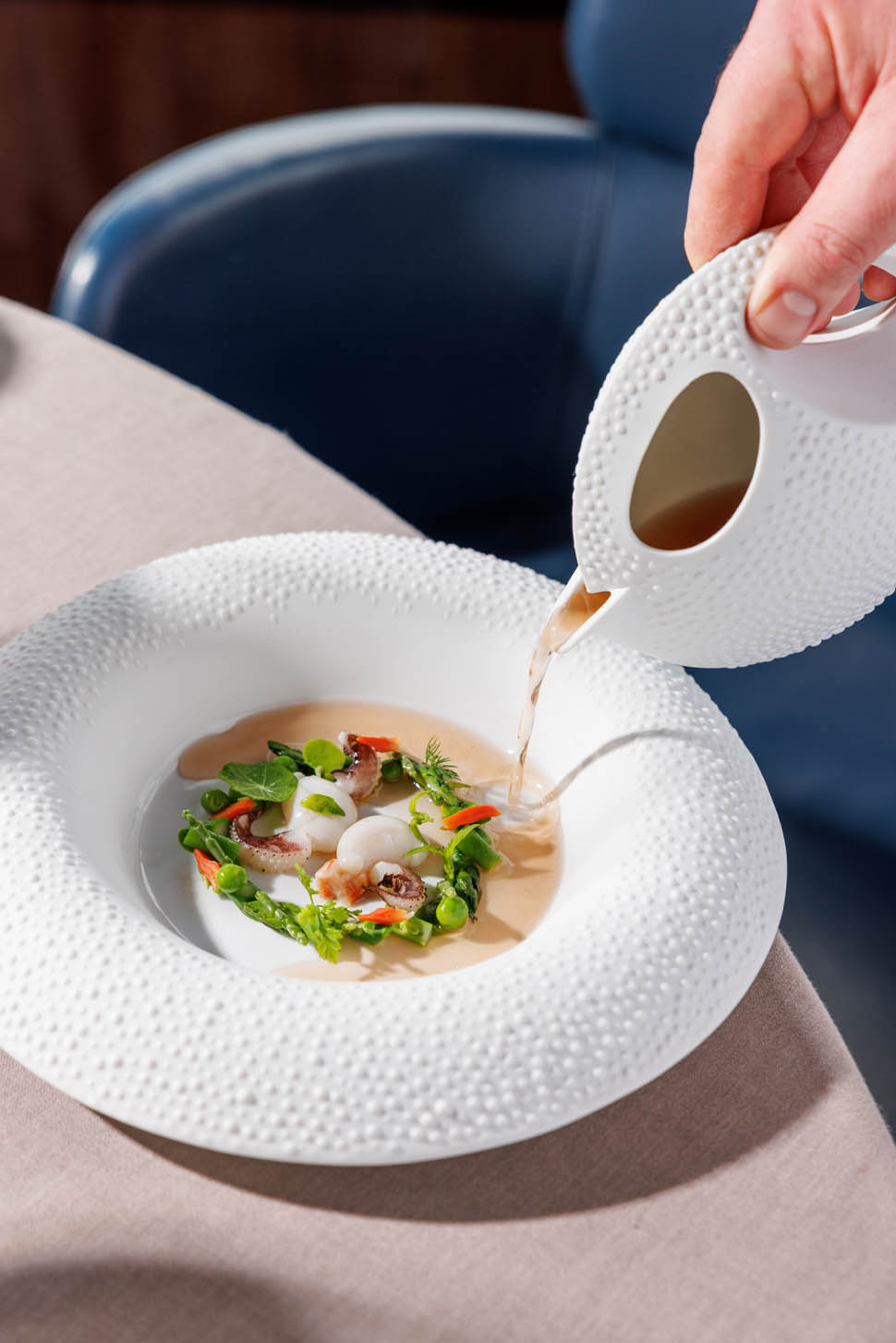
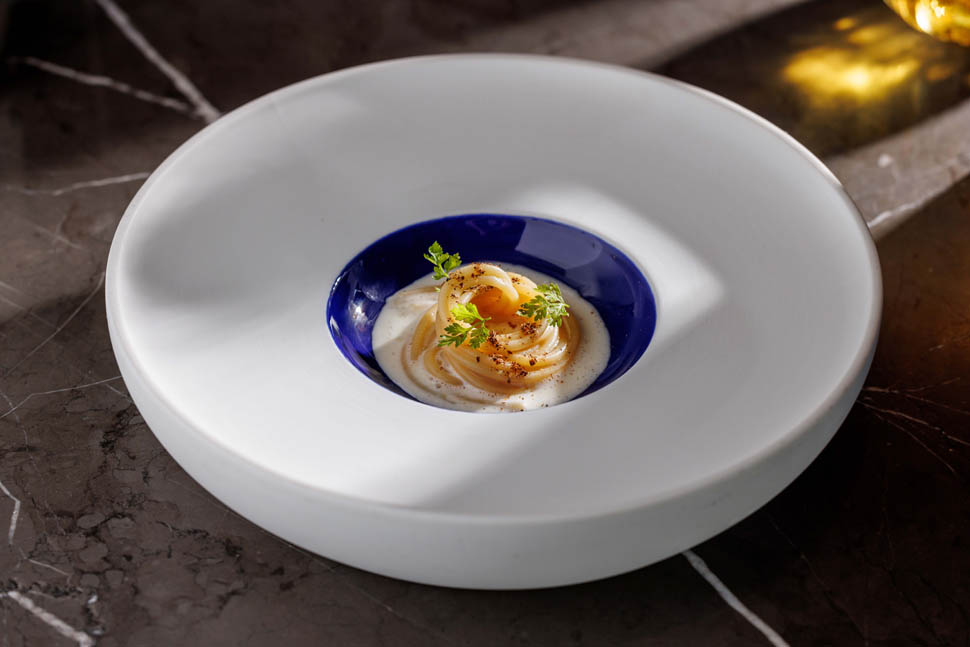
At the opposite extreme, it shakes the senses to the Spaghetto cooked not in boiling water but in an invigorating broth of tobacco leaves, coffee and acorns, where the liquid borrows the pungent scents to return them to the pasta with interest. Thus, surprisingly, it seems to taste a truffle pasta with a resolute temper, albeit totally devoid of “black gold.” An abstraction from reality that insists and persists, creating almost a “Dali-like” perceptual bubble. At the bottom the lacticity of fermented buffalo stracchino, above again Iranian black lime for a rush of tactical freshness.
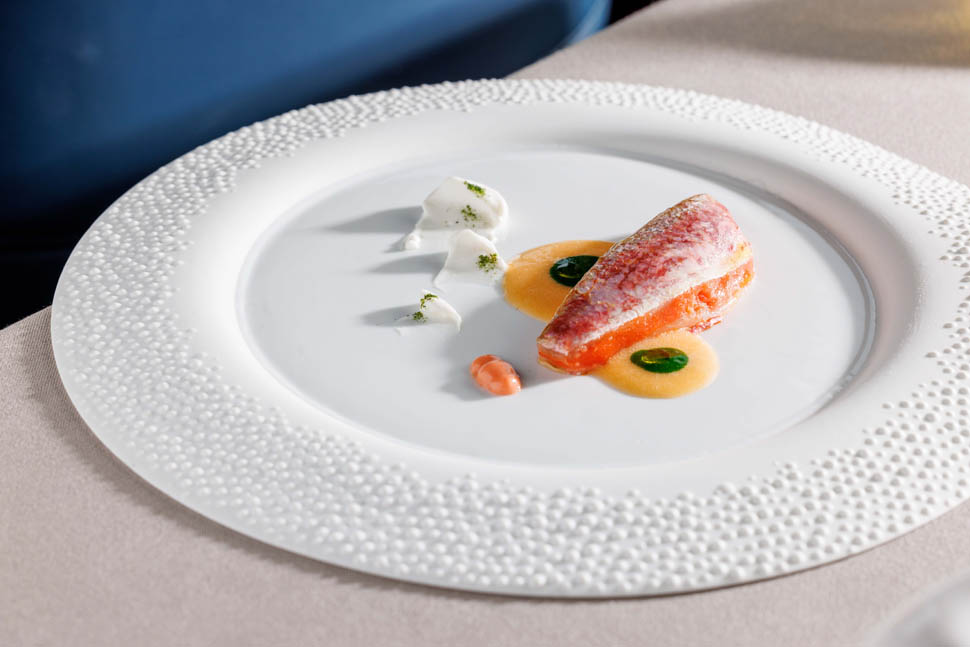
Sole and potato? A (only apparently) modest duo: they are the “Kesslers” of the second most incisive. The one sealed by brown butter, broiled and finally lightly toasted on one side, with sautéed seafood and lemon sauce to reuse the excess; the other salted-a meaty jacked potato with butter and tarragon cloaked in osietra caviar.
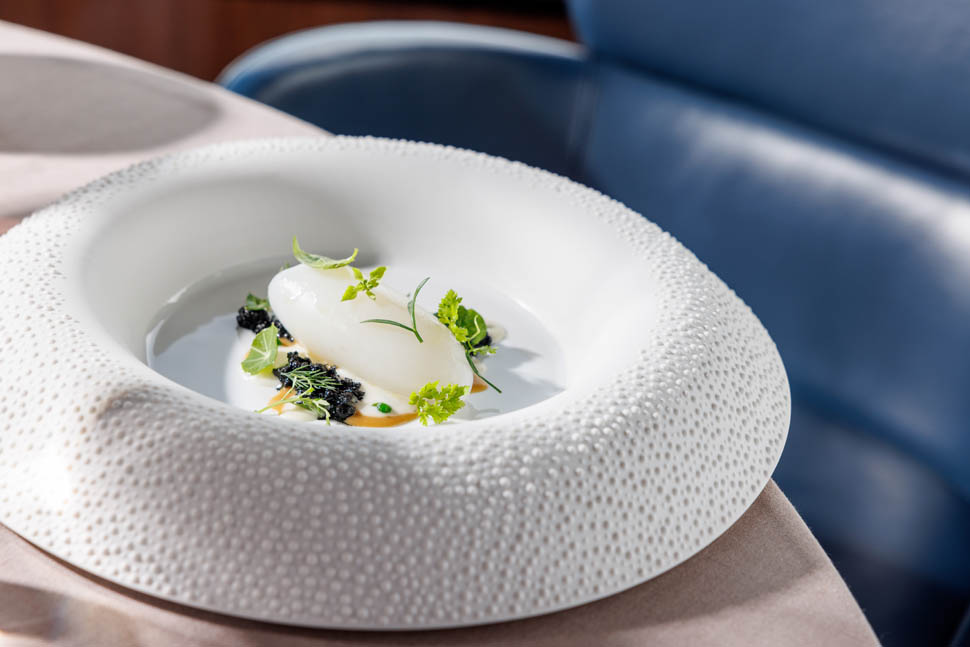
The pigeon test passes easily with a “Romanesque” reinforcement of chicory and broccoli, paving the red carpet for the dessert curated by pastry chef Angelo Artucci: a spherical Tiramisu that recovers lost dynamism, out of tension and into caress. Bitter herbs, coffee vinegar, coffee gel enliven it. And in the end, it's a whole other Eden.
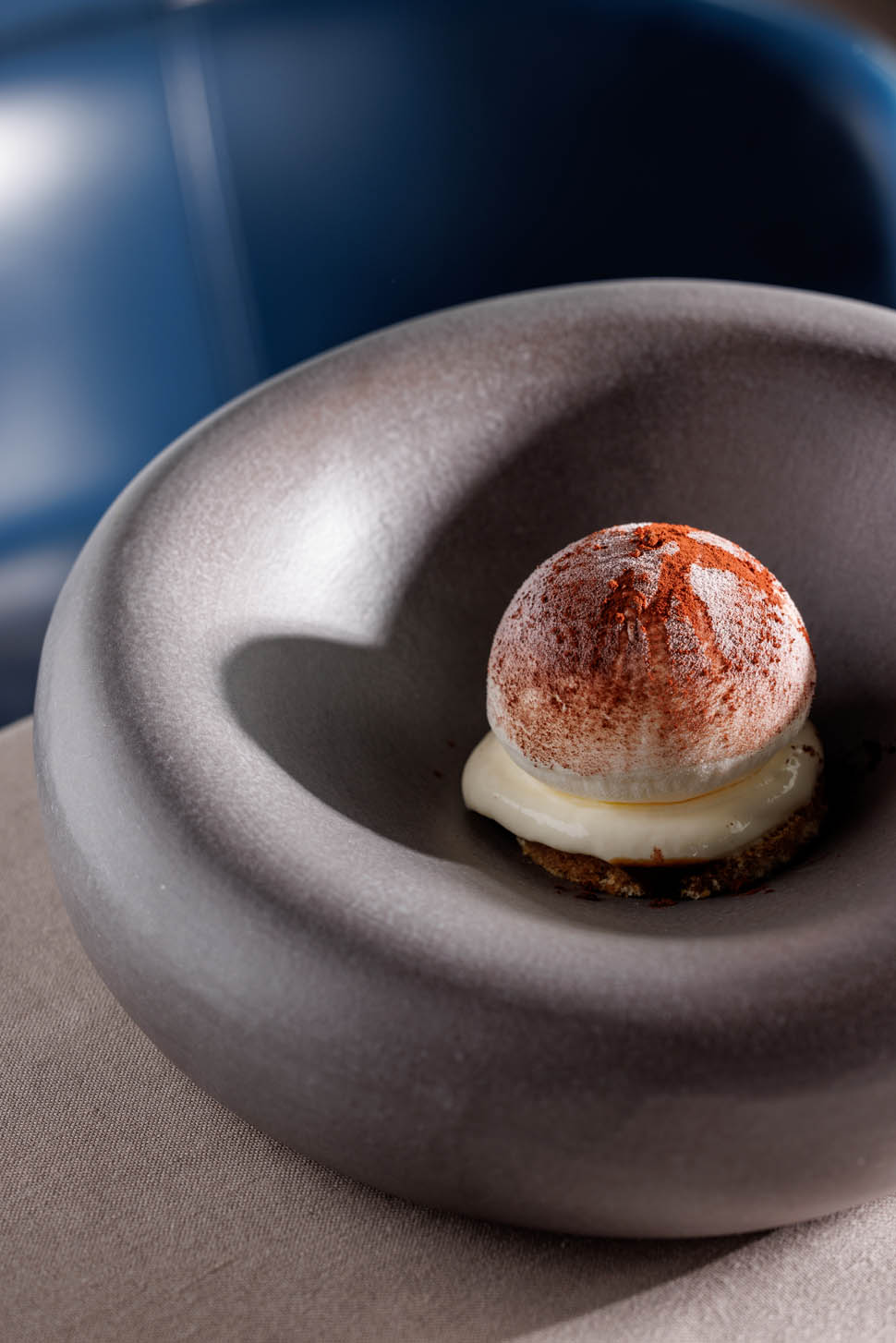
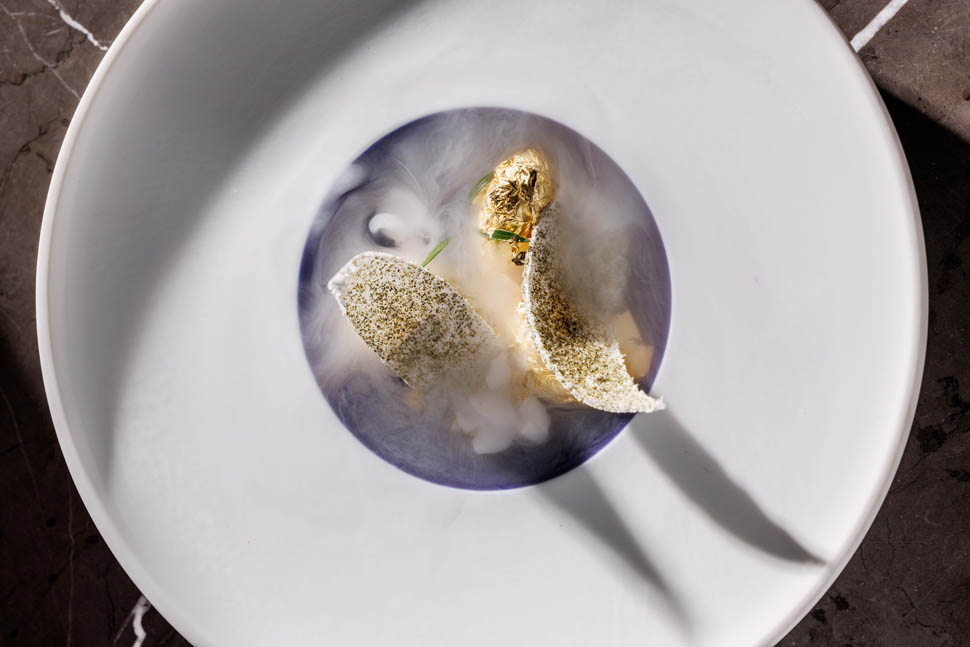
Contact
Hotel Eden - Ristorante La Terrazza
Via Ludovisi, 49, Rome, Italy
T. 06 4781 2752
